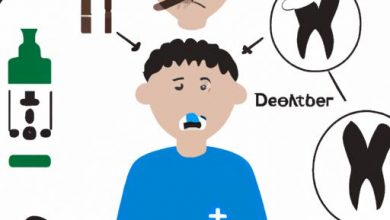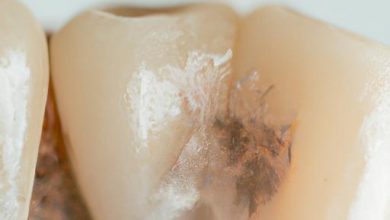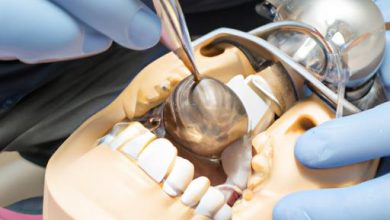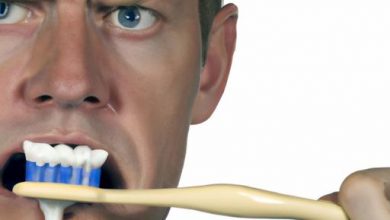Types of Dental Problems: Understanding the Most Common Issues
Dental problems are a common issue that affects millions of people worldwide. From tooth decay to gum disease, these problems can cause severe pain, discomfort, and even tooth loss if left untreated. In this article, we will discuss the most common types of dental problems, their causes, symptoms, and treatments.
Tooth Decay: The Most Common Dental Problem
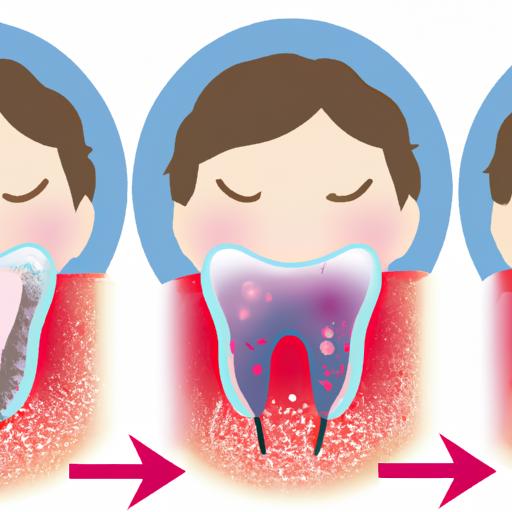
Tooth decay, also known as dental caries, is the most common dental problem worldwide. It is a bacterial infection that causes the destruction of tooth enamel, leading to cavities or holes in the teeth. Tooth decay can affect people of all ages, and if left untreated, it can lead to severe toothache, infection, and tooth loss.
Causes of Tooth Decay
The primary cause of tooth decay is poor dental hygiene. When we eat, the bacteria in our mouth feed on the food particles and produce acids that erode the tooth enamel. This process is called demineralization, and it can lead to the formation of cavities in the teeth. Other factors that can contribute to tooth decay include:
- High sugar intake
- Dry mouth
- Acidic foods and drinks
- Poor diet
- Genetics
Symptoms of Tooth Decay
The symptoms of tooth decay can vary depending on the severity of the condition. In the early stages, there may be no symptoms, and the problem may only be detected during a routine dental checkup. However, as the condition progresses, the following symptoms may occur:
- Toothache
- Sensitivity to hot or cold foods and drinks
- Visible holes or pits in the teeth
- Bad breath
- Discoloration of the teeth
Treatment of Tooth Decay
The treatment of tooth decay depends on the severity of the condition. In the early stages, the dentist may recommend fluoride treatment, which can help to strengthen the enamel and reverse the early signs of decay. However, if the decay has progressed, the dentist may need to remove the damaged portion of the tooth and fill it with a dental filling. In severe cases, a root canal or tooth extraction may be necessary.
Gum Disease: The Silent Killer
Gum disease, also known as periodontal disease, is a bacterial infection that affects the gums and the surrounding tissues. It is a prevalent dental problem that affects more than 50% of adults over the age of 30. If left untreated, gum disease can lead to tooth loss and other health problems.
Causes of Gum Disease
The primary cause of gum disease is poor dental hygiene. When we don’t brush and floss our teeth regularly, the bacteria in our mouth can build up and form plaque, a sticky film that can harden into tartar. Tartar can cause inflammation of the gums, leading to gingivitis, the early stage of gum disease. Other factors that can contribute to gum disease include:
- Smoking
- Diabetes
- Genetics
- Hormonal changes
- Medications
Symptoms of Gum Disease
The symptoms of gum disease can vary depending on the severity of the condition. In the early stages, there may be no symptoms, and the problem may only be detected during a routine dental checkup. However, as the condition progresses, the following symptoms may occur:
- Red, swollen, or bleeding gums
- Bad breath
- Receding gums
- Loose teeth
- Changes in your bite
Treatment of Gum Disease
The treatment of gum disease depends on the severity of the condition. In the early stages, the dentist may recommend a deep cleaning, also known as scaling and root planing, to remove the plaque and tartar buildup from the teeth and gums. In severe cases, surgery may be necessary to remove the damaged tissue and reposition the gums around the teeth. To prevent gum disease, it’s essential to practice good dental hygiene, such as brushing twice a day, flossing daily, and visiting your dentist regularly.
Tooth Sensitivity: Understanding the Causes and Treatment
Tooth sensitivity is a common dental problem that affects millions of people worldwide. It is a condition that causes pain or discomfort in the teeth when exposed to hot, cold, sweet, or acidic foods and drinks. In this section, we will discuss the causes, symptoms, and treatment of tooth sensitivity.
Causes of Tooth Sensitivity
Tooth sensitivity occurs when the enamel, the outer layer of the teeth, becomes thin or worn down, exposing the underlying dentin. The dentin contains tiny tubules that lead to the nerves in the pulp of the tooth, causing pain or discomfort when exposed to certain stimuli. Some of the common causes of tooth sensitivity include:
- Brushing too hard
- Gum recession
- Tooth decay
- Cracked or chipped teeth
- Teeth grinding
Symptoms of Tooth Sensitivity
The symptoms of tooth sensitivity can vary depending on the severity of the condition. In most cases, the pain or discomfort is sudden and sharp, and it can be triggered by hot, cold, sweet, or acidic foods and drinks. Other symptoms of tooth sensitivity include:
- Pain when brushing or flossing
- Pain when breathing in cold air
- Pain or discomfort when biting down on food
Treatment of Tooth Sensitivity
The treatment of tooth sensitivity depends on the cause and severity of the condition. In most cases, the dentist may recommend desensitizing toothpaste, which contains compounds that help to block the tubules in the dentin and reduce sensitivity. Other treatments for tooth sensitivity include:
- Fluoride varnish or gel
- Dental bonding or sealants
- Gum graft surgery
- Root canal therapy
Gum Disease: Causes, Symptoms, and Treatment
Gum disease is a common dental problem that affects the gums and the surrounding tissues. It is a bacterial infection that can cause inflammation, bleeding, and tooth loss if left untreated. In this section, we will discuss the causes, symptoms, and treatment of gum disease.
Causes of Gum Disease
The primary cause of gum disease is the buildup of plaque, a sticky film of bacteria that forms on the teeth and gums. When plaque is not removed through regular brushing and flossing, it can harden into tartar, which can cause inflammation of the gums, leading to gingivitis, the early stage of gum disease. Other factors that can contribute to gum disease include:
- Smoking or tobacco use
- Diabetes
- Genetics
- Hormonal changes
- Medications
Symptoms of Gum Disease
The symptoms of gum disease can vary depending on the severity of the condition. In the early stages, there may be no symptoms, and the problem may only be detected during a routine dental checkup. However, as the condition progresses, the following symptoms may occur:
- Red, swollen, or bleeding gums
- Bad breath
- Receding gums
- Loose teeth
- Changes in your bite
Treatment of Gum Disease
The treatment of gum disease depends on the severity of the condition. In the early stages, the dentist may recommend a deep cleaning, also known as scaling and root planing, to remove the plaque and tartar buildup from the teeth and gums. In severe cases, surgery may be necessary to remove the damaged tissue and reposition the gums around the teeth. To prevent gum disease, it’s essential to practice good dental hygiene, such as brushing twice a day, flossing daily, and visiting your dentist regularly.
Bad Breath: Causes, Symptoms, and Treatment
Bad breath, also known as halitosis, is a common dental problem that affects millions of people worldwide. It can be a source of embarrassment and can impact your social life and self-esteem. In this section, we will discuss the causes, symptoms, and treatment of bad breath.
What is Bad Breath?
Bad breath is an unpleasant odor that comes from the mouth. It can be caused by poor dental hygiene, certain foods and drinks, and underlying medical conditions. Bad breath can be temporary or chronic, depending on the cause.
Causes of Bad Breath
The most common cause of bad breath is poor dental hygiene. When we don’t brush and floss our teeth regularly, food particles can get stuck in between our teeth and gums, leading to the growth of bacteria and the production of foul-smelling gases. Other causes of bad breath include:
- Dry mouth
- Smoking and tobacco use
- Certain foods and drinks
- Medical conditions such as diabetes, sinus infections, and kidney disease
Symptoms of Bad Breath
The most obvious symptom of bad breath is an unpleasant odor coming from the mouth. However, other symptoms may include:
- Dry mouth
- A bitter or metallic taste in the mouth
- Thick saliva
- A white coating on the tongue
Treatment of Bad Breath
The treatment of bad breath depends on the underlying cause. If the cause is poor dental hygiene, the dentist may recommend brushing and flossing regularly, using mouthwash, and cleaning the tongue. If the cause is a medical condition, such as sinusitis or diabetes, the doctor may need to treat the underlying condition. Quitting smoking and reducing alcohol and coffee intake can also help to improve bad breath.
Tooth Loss: Understanding the Causes, Symptoms, and Treatment
Tooth loss is a dental problem that can occur at any age. It can be caused by various factors, including poor dental hygiene, trauma, and medical conditions. In this section, we will discuss the causes, symptoms, and treatment of tooth loss.
What is Tooth Loss?
Tooth loss is the loss of one or more teeth. It can be partial or complete and can occur due to various reasons, including tooth decay, gum disease, and injury.
Causes of Tooth Loss
The most common cause of tooth loss is poor dental hygiene. When we don’t brush and floss our teeth regularly, the bacteria in our mouth can build up and cause tooth decay and gum disease, which can lead to tooth loss. Other causes of tooth loss include:
- Trauma to the mouth or face
- Medical conditions such as diabetes and osteoporosis
- Aging
- Genetics
Symptoms of Tooth Loss
The most obvious symptom of tooth loss is the absence of teeth. However, other symptoms may include:
- Difficulty chewing and biting
- Facial changes
- Shifting of teeth
- Speech difficulties
Treatment of Tooth Loss
The treatment of tooth loss depends on the severity of the condition. In mild cases, the dentist may recommend a dental filling or crown to restore the damaged tooth. In severe cases, a root canal or tooth extraction may be necessary. If multiple teeth are lost, the dentist may recommend dentures, bridges, or dental implants to replace the missing teeth. To prevent tooth loss, it’s essential to practice good dental hygiene, such as brushing twice a day, flossing daily, and visiting your dentist regularly.
